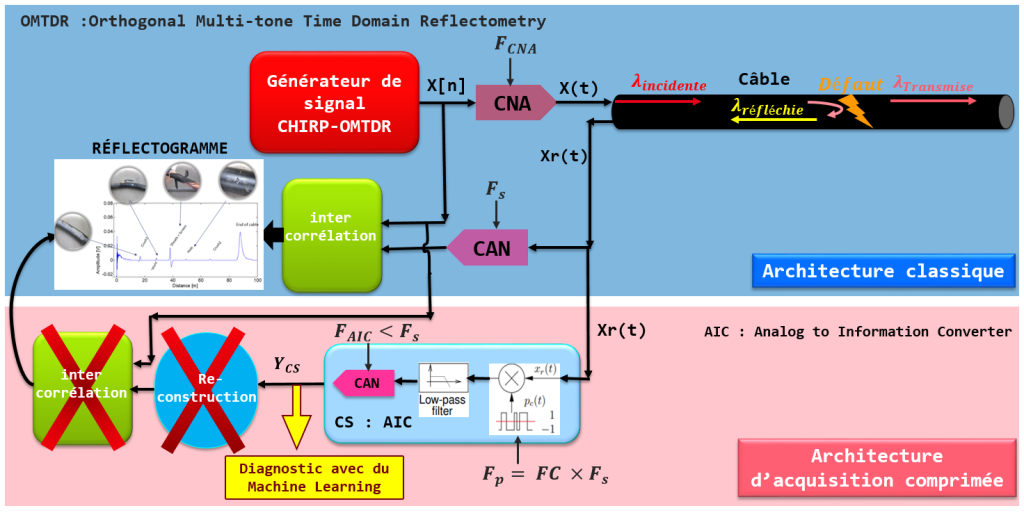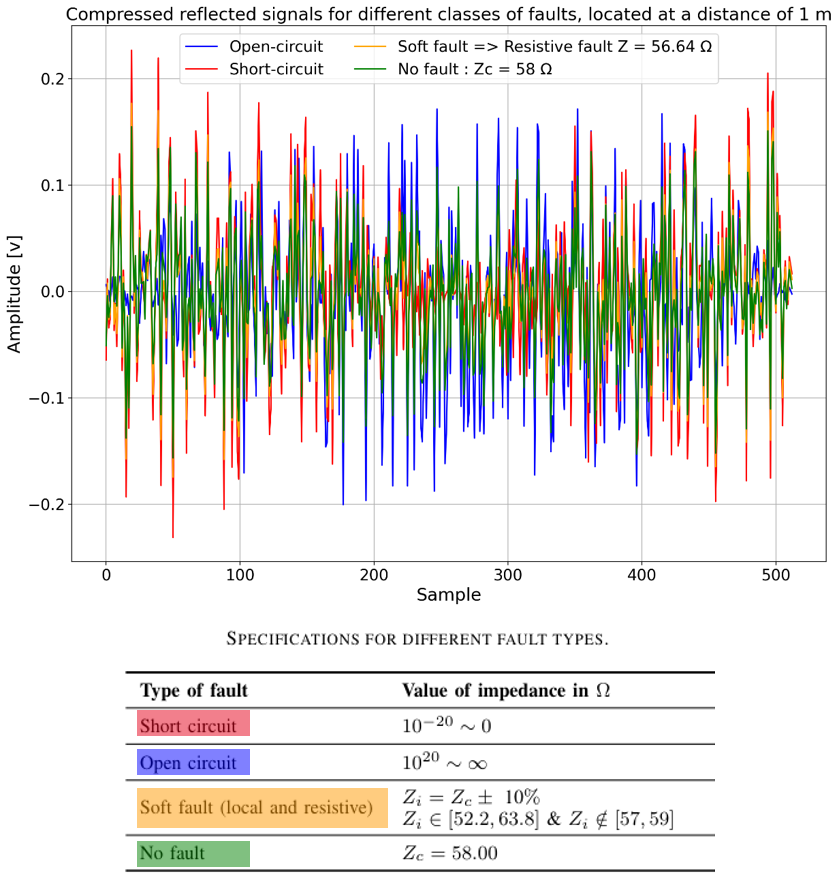
Reconstructing compressed OMTDR (Orthogonal Multi-tone Time Domain Reflectometry) data is a challenge that CEA-List is addressing through new machine-learning-based approaches that make it possible to diagnose faults from the compressed data—with no reconstruction needed.
To diagnose a fault, it must first be detected (by estimating the impedance) and then located (by estimating the position). Here, the estimations required for this two-step process are generated by the KNN (K-nearest neighbors) algorithm and a CNN (convolutional neural network).

This eliminates the need for complex, iterative reconstruction algorithms—and puts new reflectometry architectures tailored to the low-latency and real-time processing requirements of embedded systems within reach. Both the impedance estimation and fault location results were excellent in terms of accuracy. The CNN was shown to excel at estimating impedance, while the KNN algorithm showed its strengths at fault location. The requirements of each use case—available resources, required accuracy, the amount of noise—will condition which model is best. The research also produced promising fault location results with high compression factors. The award confirms AI’s potential for processing compressed data directly in cable fault diagnosis use cases.

One patent was filed for the diagnosis of faults in electrical cables using machine learning and reflectometry methods.
AI can take over when compressed signals get too complex, instantly revealing hidden defects and faults in electrical cables.